Take a deep breath. Feels simple, right? You breathe in, you breathe out. But have you ever stopped to wonder—what exactly are you breathing?
Air is all around us. We can’t see it, but it’s everywhere, wrapping our planet like an invisible blanket. It keeps us alive, helps plants grow, moves clouds, and even makes fire possible. Yet most of us never really think about what air is made of.
In this article, we’re going to open up the “secret recipe” of air. You’ll discover the gases hiding in every breath you take, why each one is important, and how they work together to make life on Earth possible. No confusing science words. No complicated talk. Just a simple, clear guide that will make you look at the air around you in a whole new way.
Air Is Not Just “Nothing”
Many people think air is empty space, but that’s not true at all. Air is actually a mixture of gases. Every time you take a breath, you’re pulling in billions of tiny particles, even though you can’t see them.
The idea that “air is something” is one of the most important discoveries in science. Long ago, people thought breathing was just filling the body with emptiness. But experiments proved otherwise. Air has weight. Air takes up space. And air is full of ingredients, each with a role to play.
So, what exactly is in this invisible mixture?
The Main Ingredient: Nitrogen
Surprisingly, the air we breathe is not mostly oxygen, even though we need oxygen to live. The largest part of air—about 78%—is made of nitrogen.
Nitrogen is a very stable gas. It doesn’t react much with other substances, which is why it makes up most of our atmosphere. Think of it as the calm, steady background gas that balances everything else out.
Even though our bodies don’t use nitrogen directly when we breathe, it’s still incredibly important for life. Plants need nitrogen to grow, and farmers often use nitrogen-rich fertilizers to feed crops. Without nitrogen, our food supply would collapse.
The Life Saver: Oxygen
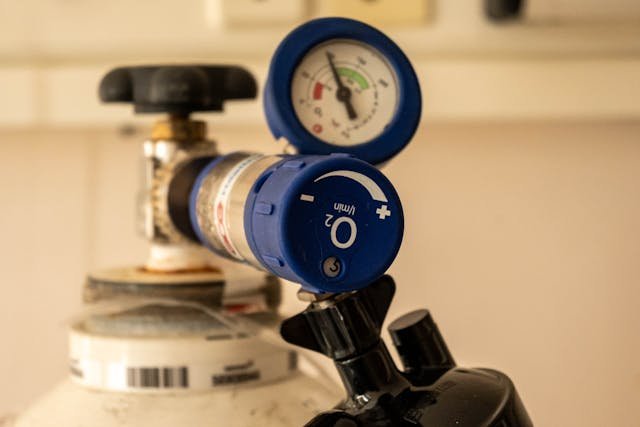
The second biggest part of air is oxygen, making up about 21% of the atmosphere. This is the gas we can’t live without. Every breath we take delivers oxygen into our blood, which carries it to our cells. Our cells then use oxygen to turn food into energy.
Without oxygen, humans and animals wouldn’t survive even a few minutes. Plants give us this oxygen through photosynthesis, a process where they take in carbon dioxide and release oxygen back into the air. So every time you see a tree or a patch of grass, remember—they’re busy making the oxygen you need.
But oxygen is not only for breathing. It’s also what makes fire possible. Without oxygen, a flame cannot survive. That’s why candles go out if you cover them with a glass jar—no oxygen, no fire.
The Trace Gases: Small but Mighty
Now, if 78% of air is nitrogen and 21% is oxygen, that adds up to 99%. What about the last 1%? That tiny slice is made up of other gases. They may be small in amount, but they play big roles in life on Earth.
The most important ones include:
- Argon – A noble gas that makes up about 0.9% of air. It doesn’t react with much, but it helps scientists in special experiments and is used in lightbulbs.
- Carbon dioxide (CO₂) – Less than 0.05% of the air, but critical for life. Plants need CO₂ to grow, and it also plays a big part in Earth’s climate.
- Neon, helium, and other rare gases – They are present in tiny, tiny amounts but still part of the air around us.
So even though these gases are small in percentage, they are huge in importance.
Water Vapor: The Hidden Part of Air
Besides gases, air also contains water vapor—tiny amounts of water floating invisibly. The amount of water vapor changes depending on the weather. On a humid summer day, the air is heavy with water vapor. On a cold, dry winter day, there’s much less.
This invisible water in the air is what forms clouds, rain, snow, and fog. Without it, Earth wouldn’t have its life-giving water cycle.
Why the Mix of Air Matters
It’s not just that air has different gases—it’s that they’re in the perfect balance. If oxygen were much higher than 21%, fires would burn too easily and too fiercely. If it were much lower, living things like us would struggle to survive.
Nitrogen keeps oxygen “in check.” By making up most of the air, nitrogen prevents oxygen from being overwhelming. Think of nitrogen as the quiet, calm friend who keeps the energetic friend (oxygen) from going overboard.
Even the tiny amount of carbon dioxide is vital. Plants need it to grow, and without plants, there would be no food and no fresh oxygen for us. That small percentage makes the difference between a lifeless planet and one full of green forests and blue oceans.
Breathing: How Our Bodies Use Air
Every time you breathe in, you’re pulling in a mix of gases. But here’s something interesting—your body doesn’t use all of them.
When you inhale, about 21% of that breath is oxygen. When you exhale, only about 16% is oxygen. That’s because your body has used some of it to make energy. The air you breathe out also has more carbon dioxide than the air you breathed in, since your body creates CO₂ as waste.
The nitrogen? It goes in and comes back out almost unchanged. It’s like a passenger along for the ride.
This shows how amazing and efficient our bodies are. We take the oxygen we need, give back carbon dioxide, and keep the cycle going for plants to use.
Plants: The Air Factories of Earth
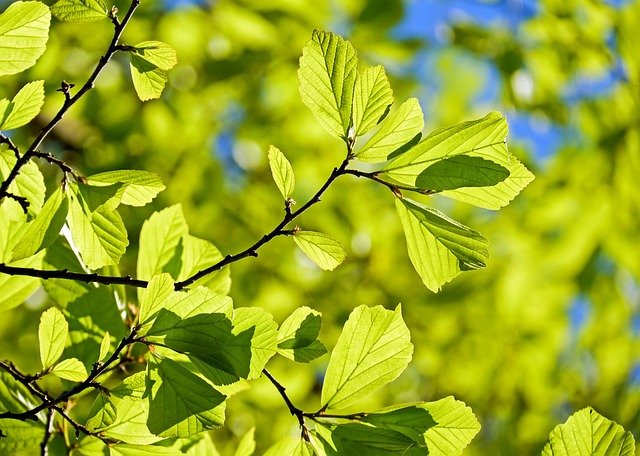
It’s easy to forget, but the air we breathe is constantly being recycled by plants. Through photosynthesis, plants take in carbon dioxide from the air, use sunlight as energy, and release oxygen. This oxygen is exactly what we need to survive.
Imagine Earth without trees, grass, or algae in the oceans. Slowly, oxygen would disappear, and the planet would become unlivable. That’s why protecting forests and planting trees is more than just about beauty—it’s about survival.
Even the smallest plants, like plankton in the sea, play a huge role. Scientists believe that more than half of the oxygen we breathe comes from the ocean, thanks to these tiny floating plants.
So every time you take a breath, remember—you’re connected to a forest, a meadow, or even a patch of ocean far away.
Air and Fire: The Invisible Link
We often think of fire as its own thing, but it cannot exist without air. Specifically, it cannot exist without oxygen. Fire is really just a reaction between fuel and oxygen that releases heat and light.
That’s why when you cover a candle with a glass, the flame goes out. It runs out of oxygen. The air around us is what makes every campfire, every stove, and even the sun’s heat on Earth possible.
This link shows how air is not just for breathing—it also powers energy, warmth, and light in our daily lives.
The Role of Air in Weather
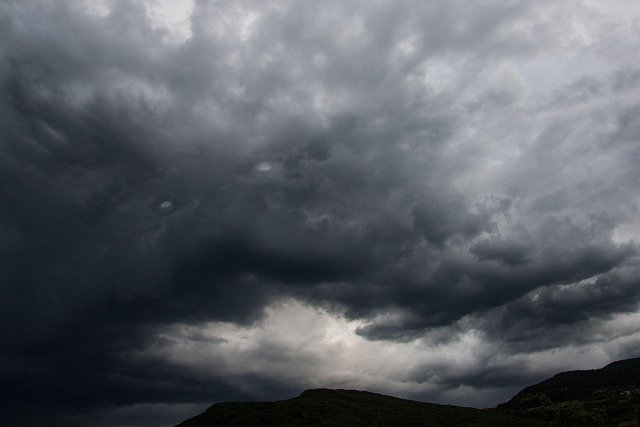
Air isn’t just something we breathe—it’s also what makes weather happen. The gases in the atmosphere move, rise, and fall depending on temperature. When warm air rises and cooler air rushes in to replace it, wind is created. That gentle breeze you feel on your face? It’s simply moving air.
When air contains a lot of water vapor, it can form clouds. If enough vapor gathers, it falls back to Earth as rain or snow. Without air, we wouldn’t have wind, storms, or even the gentle cycle of seasons. Air is like the stage where all weather is performed.
Air Pressure: The Weight of the Sky
Even though we don’t feel it most of the time, air has weight. Imagine billions of tiny gas particles pressing down on us from above. This is called air pressure.
At sea level, the air is denser and presses harder. That’s why it’s easier to breathe by the ocean. High up in the mountains, the air is thinner and has less oxygen. That’s why climbers sometimes carry oxygen tanks when they climb peaks like Mount Everest.
Air pressure also explains why our ears “pop” when we’re in an airplane. The pressure inside your body is adjusting to match the changing pressure outside.
Air and Life in Balance
Every living thing on Earth depends on air in its own way. Humans and animals breathe in oxygen and breathe out carbon dioxide. Plants do the opposite: they take in carbon dioxide and release oxygen. Together, this creates a perfect balance, a cycle that has kept Earth alive for millions of years.
If this balance shifts too much, problems happen. Too much carbon dioxide, for example, traps heat in the atmosphere and makes Earth warmer. This is what scientists call the greenhouse effect, and it’s why discussions about clean energy and protecting nature are so important.
Even small changes in air composition can have big effects. That’s why scientists study air constantly, checking pollution levels, monitoring carbon dioxide, and looking at how human activities affect the atmosphere.
Breathing the Same Air
One of the most beautiful things about air is that it connects us all. The air you breathe today might contain molecules that were once in another part of the world. Maybe the oxygen in your lungs right now was released by a rainforest tree in Brazil or a patch of ocean plankton near Australia.
Air has no borders. It travels, mixes, and wraps the whole planet like a shared blanket. This means that the choices we make—like keeping air clean—don’t just affect us. They affect everyone, everywhere.
When children understand this, they see the world differently. They realize that even something invisible like air is powerful, shared, and deeply important to life.
Air and Our Bodies
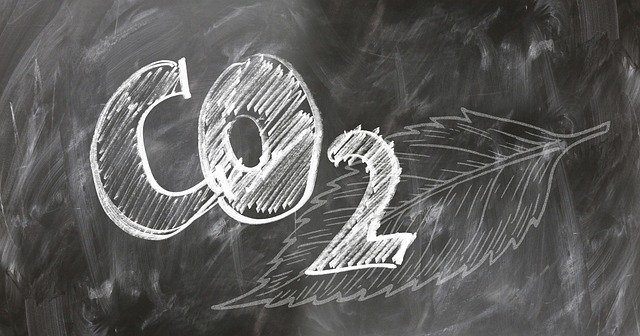
We sometimes forget just how much our bodies depend on air. On average, a person takes about 20,000 breaths a day. With every breath, oxygen flows into our lungs, passes into our blood, and travels to every cell in the body. Without it, our cells can’t make the energy we need to move, think, and grow.
But air also carries risks. When harmful gases or smoke mix into the air, our lungs take them in too. Over time, breathing polluted air can make people sick. This is why clean air is so important, especially for children, whose lungs are still developing.
Our bodies are smart, though. If you’ve ever coughed or sneezed, that’s your body trying to get rid of unwanted particles from the air. It’s like a built-in filter that protects us.
The Invisible Travelers in Air
Besides gases and water vapor, air also carries other tiny things—dust, pollen, and even microscopic organisms. You may not see them, but you feel their effects.
- Dust can make your furniture dirty or tickle your nose.
- Pollen in the air makes flowers grow, but it can also trigger allergies in some people.
- Tiny microbes, both good and bad, can float through the air. This is how diseases can spread—but also how nature keeps recycling life.
So air is never truly empty. It’s always full of tiny travelers moving around, shaping our health, our environment, and the world.
Air and Sound
Have you ever wondered why your voice carries across a room? Or how music reaches your ears? It’s all thanks to air.
Sound is simply vibrations that move through the air. When you talk, your vocal cords vibrate, and those vibrations push on air particles. The particles bump into each other like a chain reaction until they reach someone else’s ear. Without air, sound wouldn’t exist the way we know it.
That’s why space is silent. There’s no air in outer space to carry sound waves. Astronauts can’t hear explosions or voices unless they use radios. On Earth, air gives us music, speech, laughter, and every sound we know.
Air as Protection
Air doesn’t just keep us alive—it also keeps us safe. The layer of air around Earth, called the atmosphere, shields us from harmful rays from the sun. It acts like a giant invisible sunscreen, protecting our skin, plants, and animals.
The atmosphere also burns up most meteors before they can hit Earth. When you see a “shooting star,” it’s really a space rock burning up in the air. Without this shield, Earth would be constantly hit by dangerous rocks from space.
So air is not only inside us with every breath—it’s also around us, defending our planet every second of the day.
Air and Movement: The Power of Wind
Air is always moving. Sometimes it’s a gentle breeze, sometimes a strong gust, and other times a full storm. This movement of air is what we call wind.
Wind happens because the sun heats Earth unevenly. Some places get hotter, while others stay cooler. Hot air rises, cooler air rushes in to replace it, and that creates motion. From that simple process, we get the winds that blow across fields, seas, and cities.
Wind does more than ruffle hair and move kites. It carries seeds to new places, spreads pollen to help plants reproduce, and even powers machines. Today, wind turbines capture moving air to create electricity, showing how even invisible forces can be turned into energy we can use.
Air and Water: Partners in the Cycle of Life
Air and water are partners in a beautiful cycle. The air holds water vapor, which forms clouds. Those clouds gather moisture and release it as rain or snow. The water falls to Earth, flows into rivers and oceans, and eventually rises back into the air again.
Without air, this water cycle wouldn’t work. There would be no clouds, no rain, and no way to refresh lakes and crops. The balance of air and water keeps life moving, ensuring that plants grow, animals drink, and humans thrive.
Think about how often you see this cycle. Fog in the morning, rain on your window, or even dew on the grass—each one is proof that air and water are always working together around you.
Air and Energy
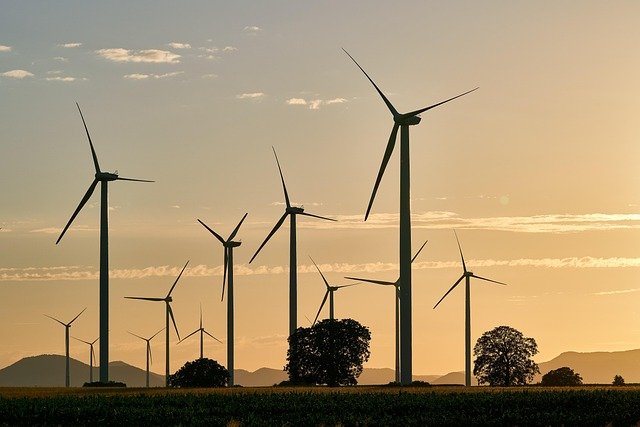
Air also plays a role in how we create and use energy. Besides wind power, air is essential for burning fuels. When we light wood, gas, or coal, it’s the oxygen in the air that allows those fuels to release energy. Without oxygen, fire cannot survive, and engines, stoves, and even candles would stop working.
Air also carries energy in the form of heat. Warm air rises and spreads, carrying heat across spaces. That’s why heaters make a room feel warm and why a hot summer day feels different when a cool breeze moves in.
In short, air is not just something we breathe—it’s also an invisible partner in almost every energy process on Earth.
The Shared Air of Earth
One of the most powerful truths about air is that it belongs to all of us. The air above one country is not separate from the air above another. Winds mix and move gases around the planet, making Earth’s atmosphere a shared resource.
This means that pollution in one part of the world can affect people far away. It also means that protecting clean air is not just a local issue—it’s a global one. Every action we take, whether planting trees, reducing waste, or choosing cleaner energy, helps protect the air we all breathe.
Air connects us all, silently linking every person, plant, and animal into one living system.
Challenges to Our Air
While air gives us life, it can also be threatened. Pollution from factories, cars, and burning fuels releases harmful gases into the atmosphere. These gases can make the air unhealthy to breathe and change the balance of Earth’s climate.
Carbon dioxide, for example, is natural in small amounts, but today it is rising higher than ever before. This extra CO₂ traps heat, warming the planet and changing weather patterns. Scientists warn that if we don’t protect our air, the very balance that makes life possible could be at risk.
Children especially feel the effects of poor air quality, since their lungs are still developing. That’s why learning about air isn’t just science—it’s also about responsibility. Every small step, from planting trees to using cleaner energy, helps protect the invisible gift that surrounds us all.
How Debsie Helps Kids Understand Air and Science

Air is invisible, and because of that, children often think it’s “nothing.” At Debsie, we change that perspective completely. We make the invisible visible, turning tricky ideas like gases, oxygen, and the atmosphere into lessons kids can actually see, feel, and understand.
Our partner teachers explain science in the simplest words, using everyday examples. A lesson on air might start with something as ordinary as a balloon, a candle, or a glass of water—but by the end, children are confidently explaining why fire needs oxygen, why balloons rise or fall, and how clouds form. What once felt complicated suddenly becomes clear and exciting.
Turning Curiosity Into Confidence
Kids are naturally curious. They wonder why the sky is blue, why their ears pop on an airplane, or why we can’t see air but still need it. At Debsie, we take those small questions and turn them into big discoveries. Through gamified lessons, safe experiments, and guided projects, kids don’t just hear about air—they test it, explore it, and prove it for themselves.
This hands-on approach builds confidence. Children start to say, “I understand this,” instead of “Science is too hard.” That confidence doesn’t just help in science—it spills into every subject, helping them think clearly, solve problems, and stay curious.
Teachers Who Make Science Feel Simple
The heart of Debsie is our teachers. They don’t just teach facts—they tell stories, answer questions, and guide children step by step. Whether your child is 5 and just beginning to learn about the world, or 15 and preparing for exams, our teachers adapt the lessons to their age, level, and style of learning.
Instead of memorizing that “air is 78% nitrogen and 21% oxygen,” children discover why that balance matters, how it keeps fire under control, and why life depends on it. This deeper understanding makes them smarter and more capable learners in every area of life.
Learning That Stays for Life
The magic of Debsie is that kids don’t just pass tests—they remember what they learn. A child who studies air with us doesn’t just recall numbers. They walk outside, feel the breeze, and think, “That’s air moving because warm air rises and cool air sinks.” They see rain clouds and think about water vapor in the atmosphere. Science becomes part of their everyday world.
That’s what true education is: not short-term memorization, but lifelong understanding.
👉 Book a free science class today at Debsie and let your child experience this joy of discovery.
Final Thoughts: The Invisible Gift of Air
Air may be invisible, but it is everything. It fills our lungs, carries our voices, powers our weather, and protects our planet. It connects us all in one endless cycle, where every breath we take is shared with the world. Once you understand what air is made of and how it works, you begin to see life itself in a new way.
At Debsie, this is the heart of what we do. We take the mysteries of the world—like the gases in the air—and make them clear, simple, and exciting for children. Our lessons don’t just teach science; they inspire curiosity, responsibility, and confidence. We believe every child deserves to look at the world and say, “I understand this.”
If you’d like your child to fall in love with science, discover the secrets of air, and grow into a smarter, more curious learner, Debsie is ready to help.
👉 Book a free trial class today
👉 Explore all our expert-led courses for kids aged 5–18
Because the best education is not just about knowing the answers—it’s about learning to see the world with wonder.
Read Next:
